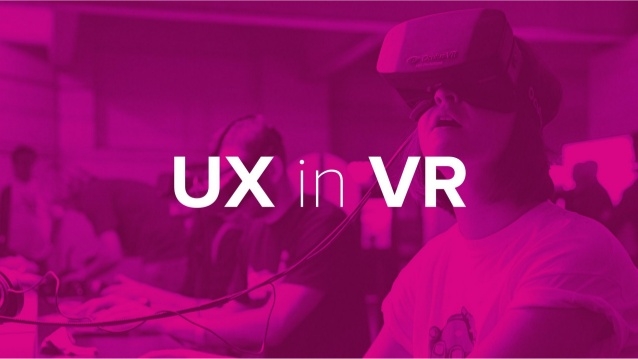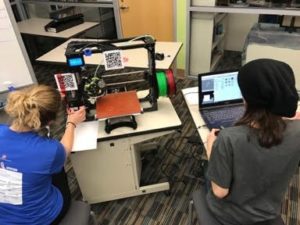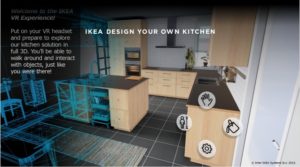
Even the simplest experiences in Virtual Reality can be incredible, but anyone who has tried a well-designed VR application knows how much design matters. As the Virtual and Augmented Reality industries continues to grow, there will be an imminent need to employ User Experience(UX) and Interaction(IxD) Designers. These designers will be crucial in creating experiences worth remembering and products people want to use over and over again.
What are UX and IxD Designers
If you are asking yourself, what is a UX or IxD designer, then this section is for you! Unless you have worked in an industry that regularly employs them, they can be confusing jobs to understand. UX stands for User Experience and IxD stands for Interaction Design and while both designers have responsibilities that seem to overlap, their driving focus is different. A great article I read breaks it down into this simplified definition:
“UX Design is how a user feels about the apps […] Interaction Design is how the user and app act and react to each other.” -medium.com
UX and Interaction Designers are growing fields across many industries and companies. They both have an important role in creating various components of a product or website to create an experience worthwhile.
Why UX & IxD Matter to the VR & AR Industries

My team designing the interaction and experience.
In any VR experience, we are attempting to creating a feeling in our users and this feeling comes from the aesthetics. VR and AR applications that are well designed are easy to understand and feel good to use. Aesthetics drive the accessibility, usability, and functionality of the experience, which are all created by UX designers. Think about a bad website you have visited where the design is ugly or the functionality is lacking or the navigation is confusing. These are all components of bad user experience designs that will cause you to bounce off the webpage and never return. UX is responsible for creating an environment you want to be in and products you love to use.
Establishing the feel and flow is only a portion of the design necessary. The next layer of engagement comes from the interactions individuals have with a website or product.
Anyone who has tried virtual reality can tell you how cool the experience was, but without some level of interaction then the experience will remain just that. Cool. Users experiencing good interactive designs will engage in the experience and enjoy the time spent using a product or application. Another great article I found that explains Interaction Design states:
"Interaction design defines the structure and behavior of interactive systems. Interaction designers strive to create meaningful relationships between people and the products and services that they use, from computers to mobile devices to appliances and beyond. Our practices are evolving with the world" -ixda.org
You can see how both these jobs matter in creating a quality product. Both job’s roles and responsibilities remain within the same focus, but will continue to change over time as the markets are expanding in various industries, especially in VR, AR, and Mixed Realities.
How UX and IxD thinking will need to evolve

Virtual Desktop - using multiple screens at once.
The focus of each designer will ultimately remain, but the tools and approaches to the job will need to evolve with the industry. The designs are no longer limited to a computer screen or website, it is now being experienced in immersive or blended 3D worlds, as well as containing abstract 4D components.
UX Designers will be responsible for solving the problems of how to work around the limitations of the hardware currently available in VR, or offer solutions by driving focus to inventing new hardware if necessary. The traditional prototyping and wireframing we have seen remained on the 2D plane of a computer and will now need to be done inside the 3D platforms so they will need to become familiar with 3D programs like Unity 3D or Unreal.
Interaction Designers will have to think beyond the simple clicks of a button, because now where you look can create an action which you can interact with and the system can play off the user. There are so many devices being created such as the Leap Motion which allows your hands to be controllers without having to hold anything. This natural interaction with VR and AR is going to be what makes a company thrive once they understand how important the design of interactivity is going to be.
Other struggles in the VR and AR development has been the tools we use to develop. When testing your product, you are constantly rotating between headset, computer screen, headset, computer screen, and this can be disorienting and frustrating.

Ikea VR design experience.
Some companies are in the process of making the development process easier by giving the ability to develop while wearing the headsets. But until they have launched these products, both designers and developers are tasked with creating the experience doing frequent testing and experimenting taking the headsets on and off as they create it.
Both designers will need to be flexible and willing to learn about complex dimensions and simplify it to make the experiences and interactions seamless and user-friendly. There will be a lot of experimenting and innovating going on because the industry is still growing, but the ultimate focus of the UX and IxD designers will remain the same. They will influence the industries by creating desired feelings in the user and creating the quality interactions between the user and product.
This blog was written by Audrey Miller-Gatewood. Audrey is currently a student in the Gaming, Interactive Media and Mobile Technology program (GIMM) at Boise State University. If you'd like to connect with her she can be reached via LinkedIn.

Audrey Miller-Gatewood



Recent Comments